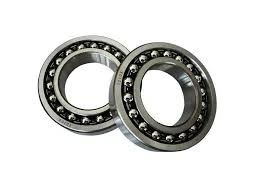
Dec . 18, 2024 11:37 Back to list
Innovative Designs in Spherical Tapered Roller Bearings for Enhanced Performance and Durability
Understanding Spherical Taper Roller Bearings An Overview
Spherical taper roller bearings are essential components in various machinery and equipment, ensuring smooth and efficient operation under a range of conditions. Their unique design sets them apart from other types of roller bearings, making them particularly suited for applications that involve heavy loads and require angular adjustments. This article will explore the structure, functionality, applications, and advantages of spherical taper roller bearings.
Structure and Design
Spherical taper roller bearings combine features of spherical roller bearings and taper roller bearings. They consist of a set of tapered rollers arranged in a spherical outer ring, which accommodates angular misalignment. The inner ring is also designed with a taper, allowing it to fit securely onto a shaft. The spherical outer surface enables the bearing to handle misalignments without significant stress on the rollers and races. This unique architecture is what makes spherical taper roller bearings adaptable to dynamic operating conditions.
The design of these bearings generally follows a two-segment philosophy an outer ring with a spherical surface and an inner ring with a tapered surface. As a result, the angle of the rollers can adjust to any misalignment, which is a common occurrence in heavy machinery. This design ensures that load distributions remain balanced, even under significant stress.
Functionality
Spherical taper roller bearings are primarily designed to support radial and axial loads simultaneously. They can accommodate misalignment and allow for a certain degree of angular displacement. This functionality makes them particularly effective in situations where machinery may not be perfectly aligned due to thermal expansions or structural deformations.
When a load is applied, the tapered rollers engage with both the outer and inner rings. This engagement distributes the load evenly across the bearing, reducing wear and tear on individual components. Additionally, the spherical design of the outer ring facilitates a larger contact area, leading to improved load capacity and stability.
Applications
Due to their robust design and versatility, spherical taper roller bearings find applications in a wide range of industries, including
1. Automotive Industry They are commonly used in axles, differential gears, and wheel bearings, where they must handle heavy loads and endure dynamic forces.
2. Construction Machinery Excavators, bulldozers, and cranes utilize these bearings in their revolving parts to maintain operational efficiency and reliability.
spherical taper roller bearing

4. Industrial Machinery In manufacturing settings, these bearings are used in gearboxes, conveyor systems, and various rotating equipment, where they help maintain precision and efficiency.
Advantages
Spherical taper roller bearings offer several compelling advantages
1. Load Capacity Their design allows for a higher load capacity than conventional bearings, making them ideal for heavy-duty applications.
2. Misalignment Compensation They can easily handle angular misalignments, reducing the need for perfect alignment during installation.
3. Durability These bearings often feature hardened steel, which enhances their durability and extends their operational lifespan.
4. Reduced Maintenance Their robust design minimizes wear, leading to lower maintenance requirements and reduced downtime for machinery.
5. Versatility Spherical taper roller bearings can be customized for various applications, allowing for tailored solutions based on specific requirements.
Conclusion
In summary, spherical taper roller bearings are crucial components in many industrial and automotive applications. Their unique design, which allows for effective load handling and misalignment compensation, makes them an ideal choice for demanding environments. As technology advances, the development and refinement of these bearings will continue to enhance their performance, ensuring that they remain central to the functionality and reliability of machinery across various sectors. Understanding their characteristics and advantages can aid in selecting the appropriate bearing solution for specific engineering challenges.
Latest news
-
Premium Deep Groove Ball Bearings | High Speed & Reliability
NewsAug.29,2025
-
Durable Scaffolding Clamps - Secure & Reliable Tube Connectors
NewsAug.28,2025
-
Common Failures in Thrust Ball Bearings and Solutions
NewsAug.22,2025
-
How Tapered Roller Bearings Can Take Shock Loads
NewsAug.22,2025
-
Angular Bearings in High-Precision Spindles
NewsAug.22,2025
-
The Impact of Misalignment on Cylindrical Roller Bearing Performance
NewsAug.22,2025
